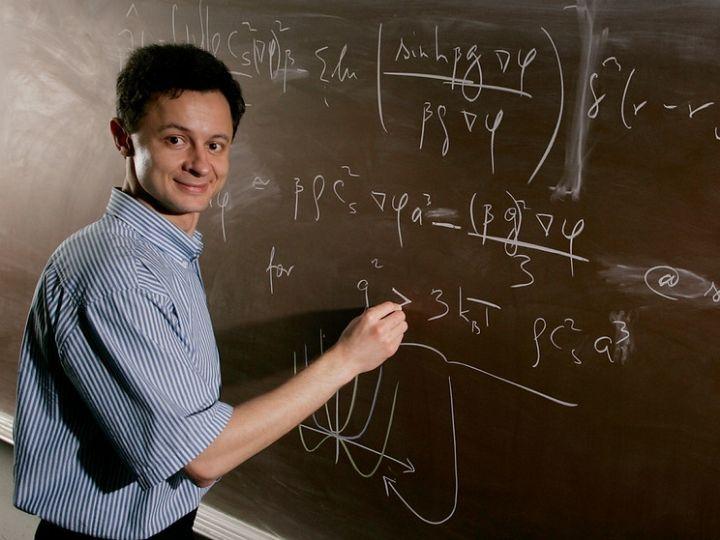Process could be similar to how first living cells formed; applications to industry possible

Credit: University of Houston
University of Houston associate professor of chemistry, Vassiliy Lubchenko, is reporting a new finding in Nature Communications on how sickle cells are formed. Lubchenko reports that droplets of liquid, enriched in hemoglobin, form clusters inside some red blood cells when two hemoglobin molecules form a bond – but only briefly, for one thousandth of a second or so.
The mystery of how the clusters form has long puzzled scientists. In patients with the inherited blood disorder known as sickle cell disease, or anemia, abnormal hemoglobin molecules line up into stiff filaments inside red blood cells, distorting their shapes and making it difficult for the blood cells to flow through narrow blood vessels. For the filaments to grow, the protein first congregates into tiny liquid droplets that are bigger than an atom, but so small their measurements are counted in increments between microscopic and macroscopic, called mesoscopic.
“Though relatively small in number, the mesoscopic clusters pack a punch,” said Lubchenko. “They serve as essential nucleation, or growth, centers for things like sickle cell anemia fibers or protein crystals. The sickle cell fibers are the cause of a debilitating and painful disease, while making protein crystals remains to this day the most important tool for structural biologists.”
Fibers don’t grow just anywhere. Special, mesoscopically-sized droplets of the protein hemoglobin inside blood cells initiate their formation. “It turns out that inside your blood cell, there are little droplets of hemoglobin that are even more crowded with the protein than the rest of the cell,” said Lubchenko. In an unexpected twist, these crowded areas are also expected to have more molecules bound together into ‘dimers’ or duos, the kind that last only a millisecond.
“The dimers are key to the formation of the mesoscopic clusters,” reports Lubchenko, who suggests that one way to prevent sickle cell disease, which affects about 100,000 Americans, mostly African American and Hispanics, is to prevent the formation of the clusters so fibers are unable to grow out of them.
Same mechanism, different substances
Lubchenko suspects that the “dimer mechanism” applies to many other types of protein and soluble chemicals. The ability to make large numbers of tiny droplets of dense liquids or gels, that are all the same size, may have applications in nanotechnology and industrial synthesis of highly textured materials. Lubchenko and researcher Ho Yin Chan’s work implies that deliberately inducing the formation of similar-sized clusters in liquids and in solids may provide a separate avenue for making uniformly-sized nanoparticles for industry.
He also speculates the formation of the clusters suggests “a tantalizing possibility that the precursors to living cells were not encased in membranes but, instead, were more like the so called membrane-less organelles,” which Lubchenko thinks have much in common with the mesoscopic clusters.
In other words, his work touches on nothing less than the mystery of life.
###
Media Contact
Laurie Fickman
[email protected]
Original Source
http://www.



